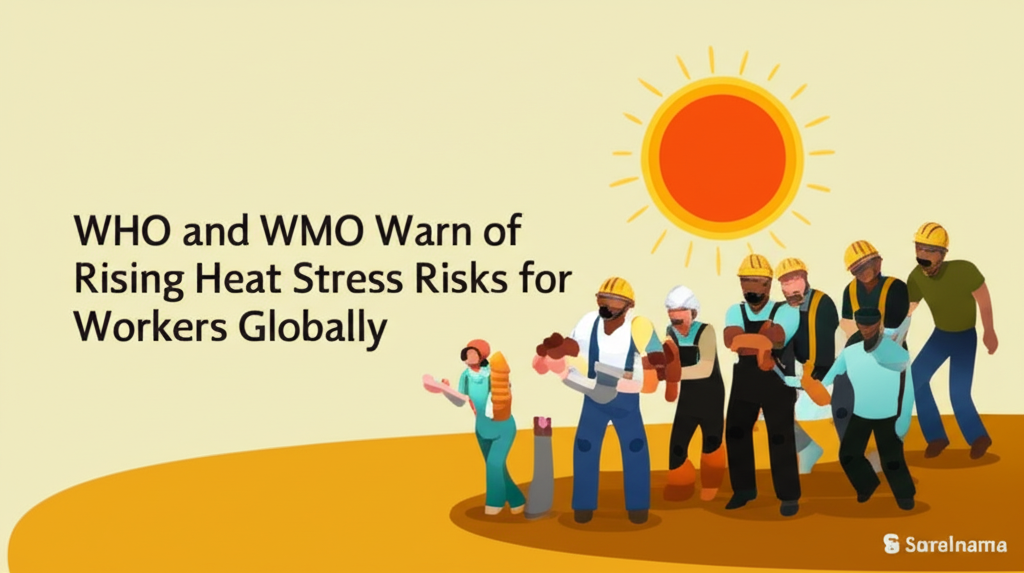
Saralnama
The World Health Organization (WHO) and World Meteorological Organization (WMO) have issued a joint report highlighting the increasing threat of heat stress as a major occupational hazard worldwide. Over 2.4 billion workers, or 71% of the global workforce, face exposure to excessive heat, which contributes to nearly 23 million occupational injuries and almost 19,000 deaths annually. Rising temperatures, driven by climate change, reduce worker productivity by 2–3% for every degree Celsius increase above 20°C wet-bulb globe temperature. Heat stress symptoms range from mild conditions like heat rash and cramps to severe outcomes such as heat stroke and neurological impairment. Vulnerable groups include outdoor workers, those in heat-generating environments, older adults, children, and people with chronic illnesses. The report urges employers and policymakers to implement protective measures such as heat warnings, adjusted work breaks, workplace redesign, and emergency plans. The WHO and WMO emphasize that without coordinated action, heat stress will become one of the most devastating occupational hazards, underscoring the need to address climate change and reduce fossil fuel emissions to mitigate future risks. (Updated 23 Aug 2025, 01:11 IST; source: link)
